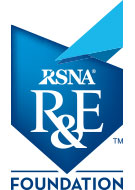Your Donations in Action: Justin Tse, MD
Biomarkers to Determine Patients With Acute Gastrointestinal Bleeding


Acute gastrointestinal bleeding (GIB) is common in the emergency department with potentially high morbidity and mortality. Multidetector CT angiography (CTA) is one of the first line noninvasive radiologic studies used to localize the source of GIB prior to further investigation with endoscopy, catheter-angiography or surgery. However, a “positive” CTA — active intraluminal contrast extravasation — does not necessarily guarantee active bleeding upon further investigation, and a subset of patients may even improve with conservative management.
With his 2019 GE Healthcare/ RSNA Research Resident Grant, Justin Tse, MD, Stanford University, CA, and colleagues sought to determine if the bleeding rate can be calculated from CT angiography data and be used to risk stratify patients. The idea is that if the bleeding rate is very slow, it is unlikely to be re-identified with more invasive procedures and can potentially be managed conservatively, while higher bleeding rates may need more immediate, invasive and intensive treatment.
First, the researchers found that modern CT angiography techniques can detect bleeding rates as low as 0.1 mL/minute. This means that modern CT angiography is as sensitive as tagged red blood cell scintigraphy but is more widely available and can be performed more expeditiously. Second, they found a threshold bleeding rate — 0.8 mL/minute — that optimally identified which patients were more likely to have active bleeding during endoscopy or catheter angiography, undergo hemostatic therapy and require additional blood transfusions.
“Although this threshold may vary depending on institutional practices, we hope that this study can serve as a proof-of-concept that CT angiography may have prognostic value in addition to localizing the bleed,” Dr. Tse said.
In addition, Dr. Tse acknowledged that the R&E grant gave him a head start in his academic career. “By providing me with protected time, I was able to pursue my interest in mathematical modeling of physiologic processes and develop a platform that can be used as a basis for future, larger projects and grants,” Dr. Tse said. “The longitudinal nature of the grant also helped me build mentor-mentee relationships with other clinical-scientists, in particular, my scientific advisor Dr. Aya Kamaya, who helped inspire me to pursue a career in academic radiology. We are excited to share our results with the broader radiology community in the June 2021 issue of Investigative Radiology.”
For More Information
Learn more about R&E Funding Opportunities.
Read last month's Your Donations in Action article.